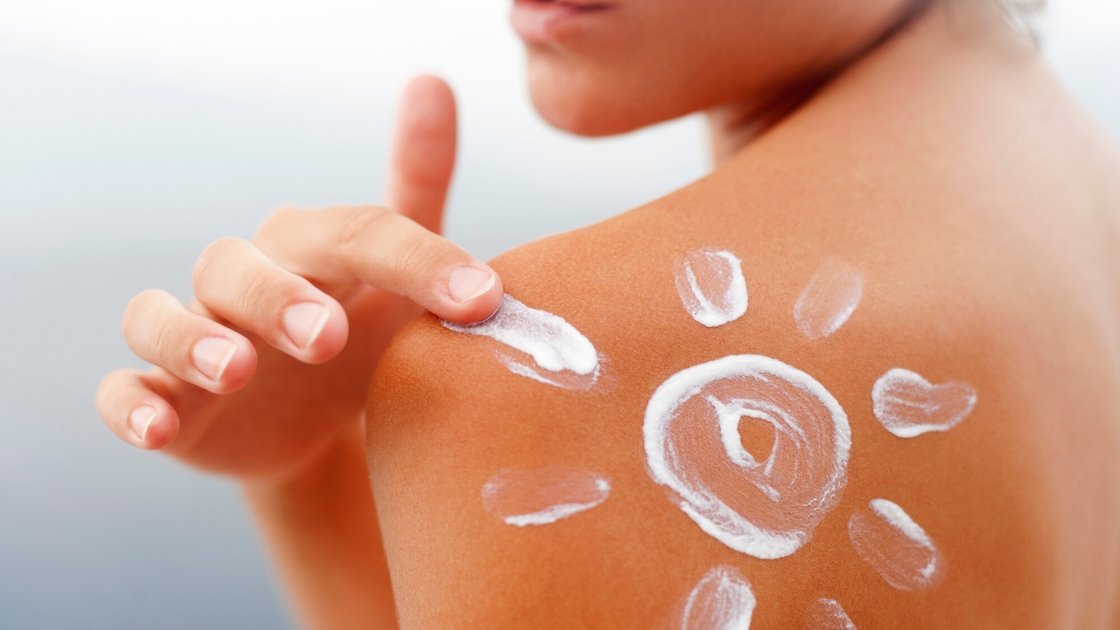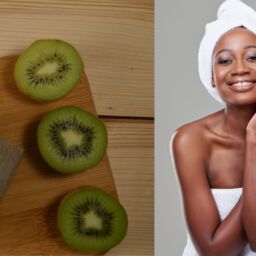What a Skin Care Routine Looks Like for Sensitive Skin Type: For a long time, I thought the scaling of my skin around the cheeks is caused by some sort of an irritant. Little did I know, I just happen to have a combination type of skin. It was only that my face wash targeted both the excess oil in my oily T-zone, as well as my not so oily cheeks.
Hence the flaky skin! My skincare routine was clearly creating the havoc.
Understanding the skin type is crucial for determining a skincare routine.
So, I will let myself to trespass over your patience, you the good reader of our blog, and explain what we mean by sensitive skin in the first place.
For the purpose of the current article, sensitive skin refers to a type of skin which is prone to reactions against irritants or factors outside the body which cause damage to the barrier of the skin.
Irritants may include the hot or cold weather, humidity, pollutants, rays of the sun, topicals, hard water, food and hormones among others.

Ok, but what does a sensitive skin look like?
Well, it depends. I mean, sensitivity may appear in different ways.
Symptoms as mild as a simple itching, dryness and redness or more severe as scaling, rashes, rosacea, eczema or other inflammatory cases can categorize a sensitive skin.
Research has shown that the condition is caused by a barrier damage as well as hyperreaction to materials used as topical.
And how does it feel like?
An irritated skin has itching, burning, and stinging sensations, especially after wearing cosmetic products or after washing and exfoliating the skin.
Well, the human body is the most complicated system to have been ever created.
So, I don’t wish to reduce a condition as divergent and dynamic as skin sensitivity into merely three short paragraphs.
This was just the broadest and most commonly applicable introduction to sensitive skin. Make sure to tell us how your sensitive skin feels or looks like, and if you have found any useful remedies besides what we are about to offer.
And that’s it with me trying your patience. Thank you!
The skincare routine for a sensitive routine looks much the same as the skincare routine for other skin types. I mean, the steps you need to follow are somehow the same: clean, moisturize, exfoliate, use a sunscreen.
However, and I couldn’t put it more emphatically, details go a long way at every step of a perfect routine.
The important thing is for you to recognize what causes the sensitivity, stop the irritation, avoid specific ingredients, and swap them with soft ones which don’t contain irritants.
So, here I will break down every step of the way into the ingredients you need to steer clear of, and the ingredients you can take.
I will also make a hint to the best make up products for your skin. But, in case your skin sensitivity can be categorized as acute, please take what you read here as merely information and make sure to consult a dermatologist before making a step.
An appropriate prescribed treatment might be carefully set to achieve short and long-term objectives, keeping a tap on the irritation.

Here is what a skincare routine for sensitive skin may look like:
Clean:
Cleaning your skin pores off the impurities that cause clogging is one of prime importance for your routine. As regular soap deprives the skin of the sebum produced by skin’s oil glands, you need to pick a gentle face wash.
Factor in your skin type too. For example, if you have an oily skin, you can gravitate to water-based cleansers.
While for dry skin types, you can use more oil-based and cream-like products. Also, you may need to make sure your face wash balances the pH of your skin around 5 and 5.5.
This way your barrier won’t be damaged and enough hydration will be restored to your skin.
Ingredients to avoid
The sensitive skin should not come into contact with:
- Alpha hydroxy acid
- Beta hydroxy acid
- Salicylic acid
- Acids in general
- Sodium lauryl sulfates
- Alcohol
- Fragrance
Note: It’s wise to avoid these ingredients in your shampoo as well, as it will run the risk of exposing the skin of your face to these ingredients.Gentle cleansing is usually advised twice daily, in the morning and at night.
However, your sensitive skin may require you to slow it down and reduce the frequency to 1.
Toners usually go hand in hand with face washes. They help deep cleaning of the skin and unclogging the pores.
However, they tend to be loaded with alcohol and acids which dry out the skin. It is needless to say that a dry skin may not only feel flaky, but it will also produce excessive oil in order to maintain the original amount of lost oil, hence worsen the condition.
So, you might skip the toner just as well.
However, it’s good to know that moisture-based toners, called essence, may be handy to use instead of toners. The ones rich in hyaluronic acid and glycerin have a fair share of moisturizing effect for the skin.
Exfoliate
If you have a sensitive skin, you might already be dreading even the word of exfoliation. Substances which are able to scrub your face and remove dead skin cells together with other impurities might damage the protective barrier of your skin and not be a good idea for a sensitive skin.
Needless to mention exfoliating acids are the last thing you like to embrace.
But again, it all comes down to what you use. Gentle physical exfoliants with plant-based formulas which don’t run the risk of over exfoliating your skin work well for sensitive skin.
Exfoliating with soft substances for at most twice a week will help you get rid of the dry and flaky feeling on the surface of skin.
Ingredients to avoid
- Astringents
- Acids (such as glycolic and salicylic acid)
- Retinoids
Moisturize
Maintaining and nourishing your barrier is important for controlling the damage in sensitive skin. Humectants and emollients are ingredients to look for in your moisturizer. These include hyaluronic acid, shea butter, and glycerin.
Humectants, as hygroscopic ingredients, allow the skin to absorb humidity from their surroundings, while emollients cover the surface of the skin and trap moisture inside. In addition to this, nourishing oils such as ceramides and fatty acids can help replenish your skin.
Ingredients to avoid
- Fragrance
- Dyes
- Alcohol
- Excessive oil
Note: The consistency of your moisturizer can be really effective in treatment of your skin. You can shift between water-based moisturizers and cream-based ones or those with thicker consistencies, in the summer and winter respectively.
Make sure to moisturize your skin at least twice a day, after every time you wash your face.
Sunscreen
Serious damage to the barrier and hyperpigmentation can be caused by the sun. Not to mention active acnes get only worse with the sun, and scarring goes on full force.
So, it’s only natural when we say that the nonnegotiable member of every skincare routine is the broad-spectrum protection, such as SPF 30 or SPF 50. Make sure to apply the sunscreen on your face at least 15 minutes before going out, to allow it enough time for activation.

Ingredients to avoid
- Oils
- Formaldehyde
- Paraben
- Fragrance
- Dyes
Note: You can pick moisturizers with contents of SPF, in order to avoid lathering too many products on your skin.
When the time comes for make-up, you want to chose products which don’t cause irritation and are removed easily.
This excludes water proof materials or those with longer duration and complex formulas. Products with mineral and silicon base foundations also work well for the skin with sensitivity, in general.
You also need to check the expiration date of the product, as it can play a significant role in contaminating and further irritating your skin.
Before purchasing a product, you can have a small patch test inside of your wrist. Allow it to show results 48 hours after application.
Some delayed allergies might show up even later, around 96 hours after application.
You can also visit a dermatologist, and have common irritating substances tested on your skin to determine which ingredient is specifically causing your skin sensitivity.
You will also like to avoid DIY remedies, which often include abrasive ingredients, prescribed without enough attention to your skin types and allergies.
Sticking to the basics is the key to control skin sensitivity. I don’t mean growth factors and nourishing serums must be left out of your routine.
But, as a combination of individually harmless factors may have a different result together, it is better to control the ingredients included in the products you use and their effect in combination with other ingredients.
The base line is this: you don’t want to excessively dry your skin, nor let it grow excessively oily with pores clogged by irritants and pollution.



